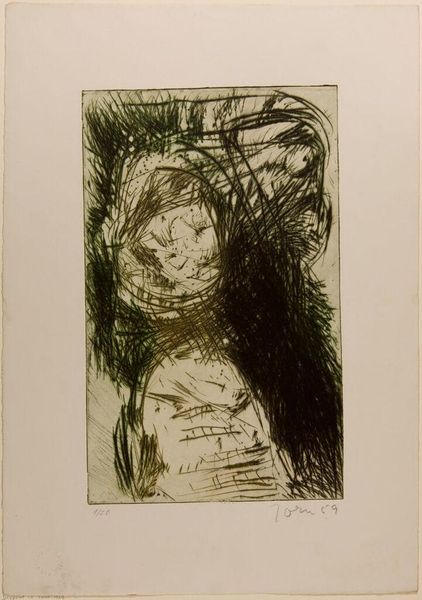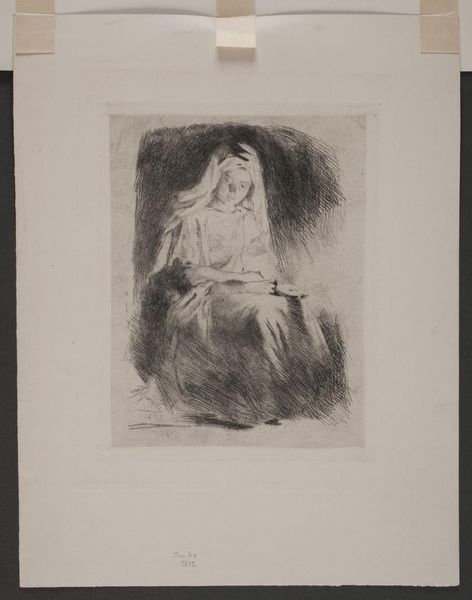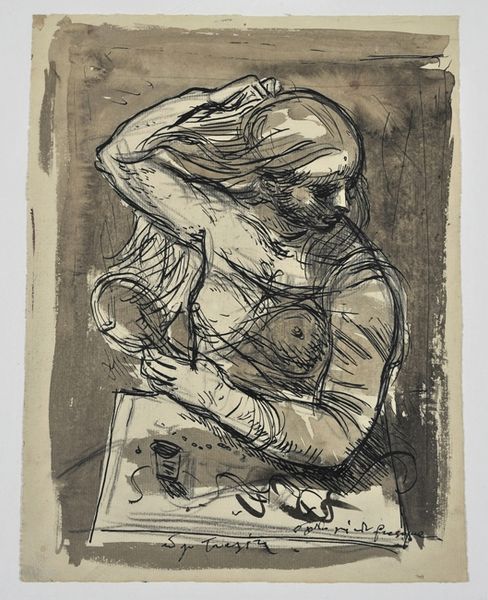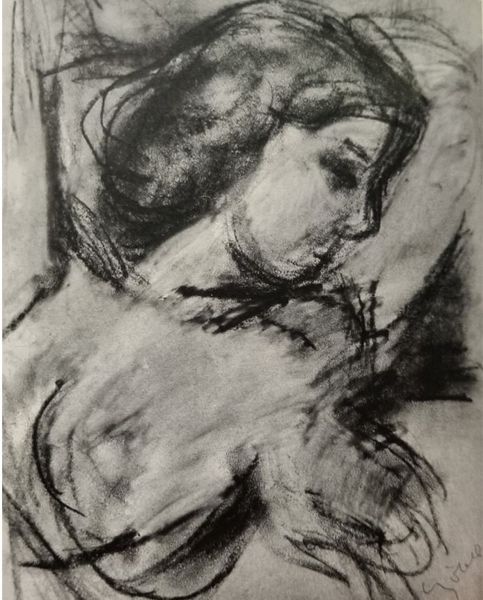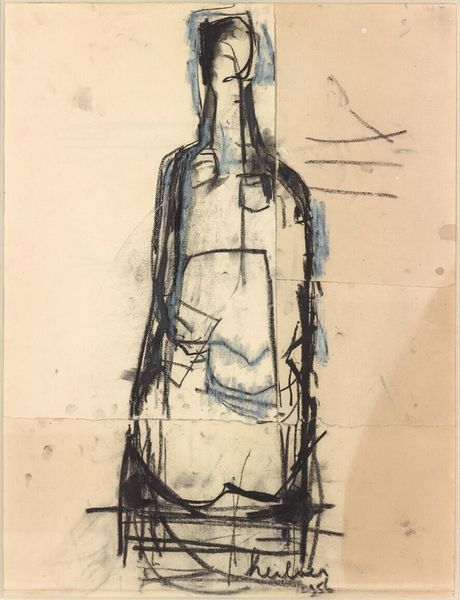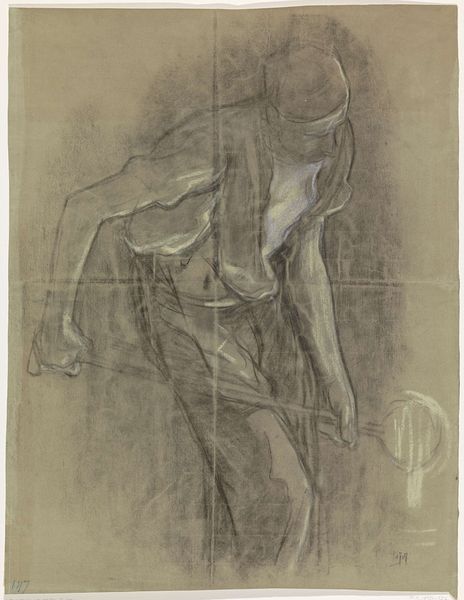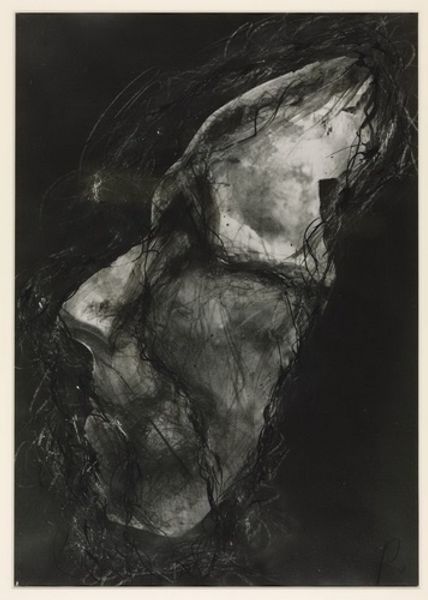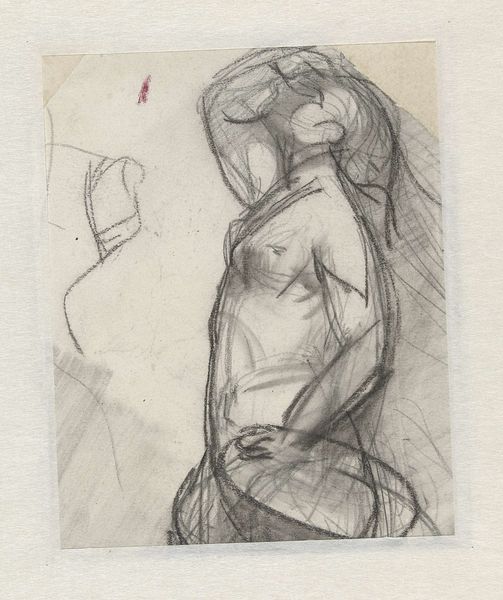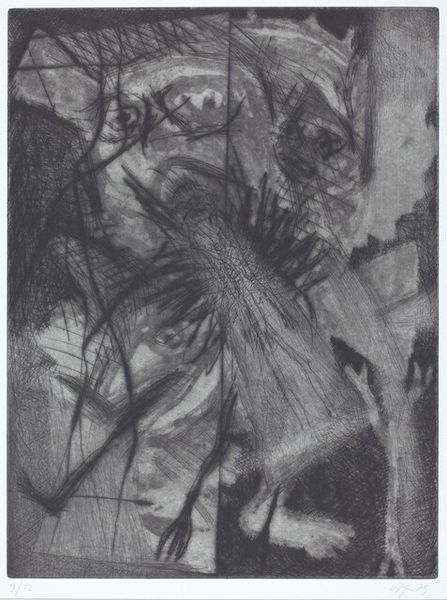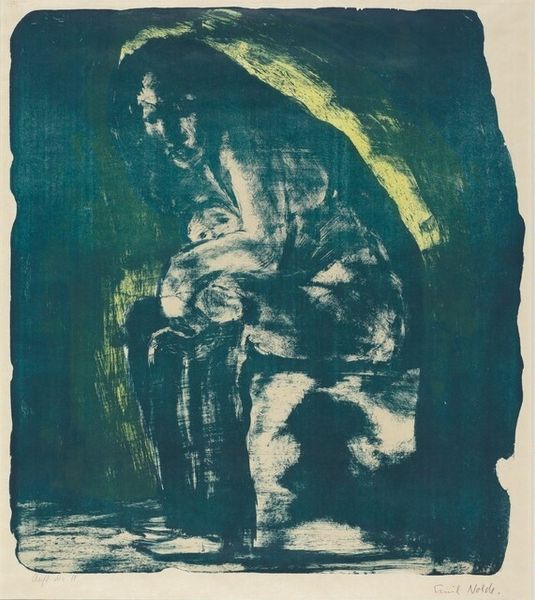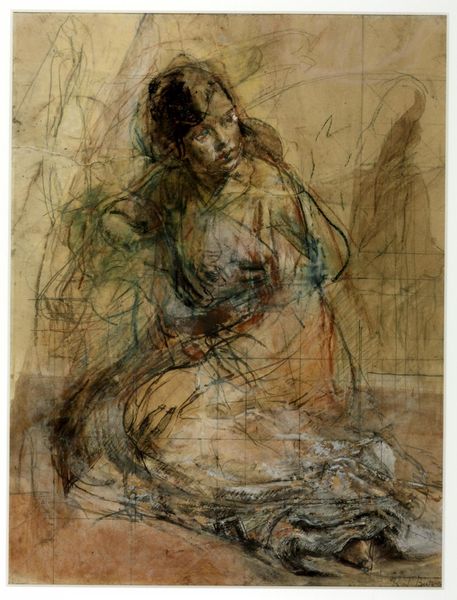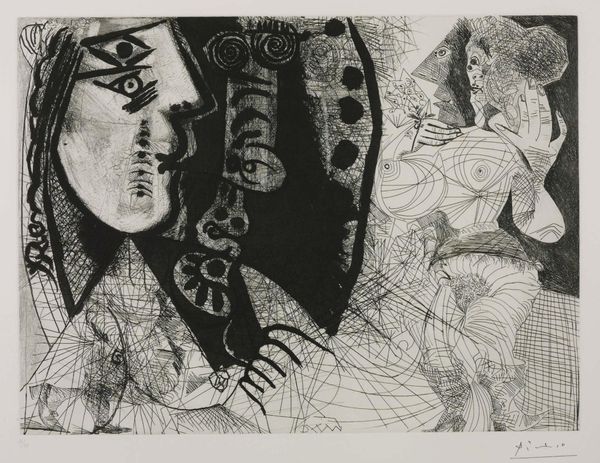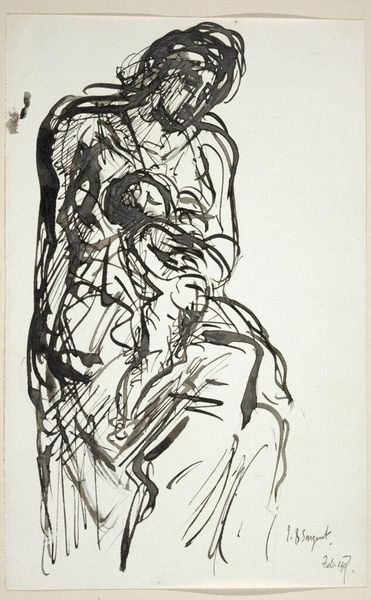
Dimensions: support: 512 x 385 mm
Copyright: © Tate | CC-BY-NC-ND 4.0 DEED, Photo: Tate
Curator: Cecil Collins's "Woman," held in the Tate Collections, presents a striking study in charcoal. The somber palette and coarse marks immediately evoke a sense of melancholy. Editor: Indeed, the figure's bowed head and the heavy lines shadowing her face suggest a deep sorrow, perhaps born of societal constraints and expectations placed upon women. Curator: I see the composition itself reinforcing this reading. Note the sharp, angular lines juxtaposed with the softer curves, creating a visual tension that mirrors the subject's internal conflict. The hatching also gives depth. Editor: Right, and given Collins's interest in spirituality, the wheel-like structure above her head could symbolize the cyclical nature of female experience, bound by patriarchal systems, with little agency to break free. Curator: A compelling interpretation. But I also see a formal elegance in the work, the way the light and dark interact to create a dynamic, almost sculptural form. Editor: Ultimately, it's a work that invites us to consider both the aesthetic and the socio-political dimensions of the female figure. Curator: A testament to the power of art to provoke introspection.
Comments
Join the conversation
Join millions of artists and users on Artera today and experience the ultimate creative platform.
tate 8 months ago
⋮
Collins pursued his vision of a lost paradise, destroyed by the mechanisation of the modern world, throughout his lifetime. Creating his own version of archetypal figures, such as the Fool and the Angel, he attempted to reveal to us our innermost selves. These figures, he believed, represented an innocence that had ceased to exist in the ‘Machine Age’ (Keeble, p.73). Many of Collins’ aims and beliefs were promoted in an essay he titled The Vision of the Fool, which was first published in 1947. Throughout the essay Collins links the Fool with the ‘Saint, the artist, the poet’ (Keeble, p.81). He explains, ‘modern society has succeeded very well in rendering poetic imagination, Art, and Religion, the three magical representatives of life, an heresy; and the living symbol of that heresy is the Fool. The Fool is the poetic imagination of life, as inexplicable as the essence of life itself’ (quoted in Keeble, p.73).
